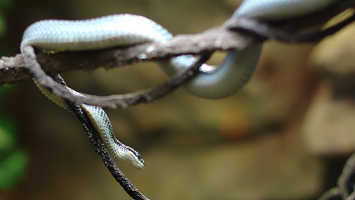 by Shereen M
by Shereen M
Who needs coauthors?:
[Via Survival Blog for Scientists]
Young people, in tenure track positions, feel they to have to collect as many authorships as possible. Questions like “Will I be a coauthor?” and demands as “I have to be a coauthor” are part of daily conversations in science institutes.
But not only junior scientists are eager to boost their cv’s with authored papers.
[More]
Biology papers usually have large numbers of authors. It is rare to see a major paper in Nature or Science with two authors. Often modern papers are the results of collaborative research between multiple institutions. It makes it easier to get your name on a lot of papers but also makes proper assignation of credit difficult.
Credit for papers can be incredibly important and manipulation of the credit is not unheard of. Harvey Fletcher was a graduate student for Robert Millikan around 1910. Fletcher developed and designed the oil-drop experiments that measured the charge on an electron as well as investigations on Brownian motion that led to a better determination of Avogadro’s number.
Now, Fletcher could use a published paper in lieu of his Ph.D. thesis but only if he was sole author.
Millikin proposed that Fletcher be the sole author on the Brownian motion work and Millikan would be sole author on the electron charge work, even though Fletcher’s work was critical in both. Millikan knew which one would be the more important paper. As a graduate student, Fletcher really had no choice but to acquiesce to Millikan’s proposal.
Millikan published as sole author of the paper on the charge of the electron. Fletcher wrote on Avogadro’s constant. Millikan won the Nobel Prize in 1923. Although, Fletcher became the first physics student to graduate from The University of Chicago summa cum laude, he spent most of the next 38 years outside of academia, working at Bell Laboratories.
Although he did not win the Nobel Prize, he had a tremendous impact on many of the technologies that were developed in the 20th Century. At Bell Labs, he not only became ‘the father of stereophonic sound’ but was the director of the labs that developed the transistor.
What this shows is that while a true genius can not be stopped by who published what, in the scientific world, particularly in academia, the assignment of credit has huge ramifications. Almost anyone who takes physics knows about Millikan and the oil-drop experiment. Who knows about Fletcher?
These days, often the person who did the research is first author and the person who directed the research or whose lab supported the research is last. Everyone else involved in smaller amounts is in between.
But this can change. Often with 20 authors, no one ever gets to the last one when the article is referenced. The bibliography will just be ‘Smith, et al.’ So sometimes, the director of the lab will be placed as first author instead of last so everyone sees their name in the references.
So how does proper credit actually get assigned? In large measure, figuring out who designed the critical experiment, who simply provided reagents and who had critical intellectual input are all hidden from general view. This permits political pressures, such as what Millikan used on Fletcher, to determine placement, rather than actual worth.
Huge battles have been waged over where one’s name gets placed in a paper. Since this is what the world will see, it is worth it for many people to spend all their political capital to get a choice placement on a paper. A lot of scientific blood may have been spilt in order to get on a paper published in Nature.
Sometimes those in the know have an idea of proper credit but tenure committees, grant committees and other vetting bodies can have a difficult time telling just what contribution a scientist made on a paper with 40 authors.
There have been some attempts at better clarifying this, with authors making statements about who did what. Perhaps as we move away from the current model of publishing to one more digital in nature, there will be approaches to simplify this process.
In particular, there will have to be a way to assign credit for things other than just the number of publications. Scoring the impact people had on those publications, what work they actually performed and where they can be placed in the process that lead to novel scientific discoveries will become more likely, if the social media aspects of Science 2.0 comes to be appreciated.
Because every one of those aspects can be time-stamped and made accessible by using things like wikis and weblogs in ways that email will never accomplish. Openness and transparency, important aspects of successful Web 2.0 tools, will also make it possible to more accurately track the progress of creativity and innovation. Surely rewards will follow.
Will Science 2.0 make it less likely that political pressures can be used to claim credit that is not deserved? Being human, the pressures may never disappear. But Science 2.0 should make it a little more difficult to claim credit after the fact. Fletcher kept the secret of Millikan’s proposal until after he died. In those days, it was easier to control the flow of information, to hide political manipulations of the research.
Now, not as much.
Technorati Tags: Open Access, Science, Social media, Web 2.0
 by dbking
by dbking









